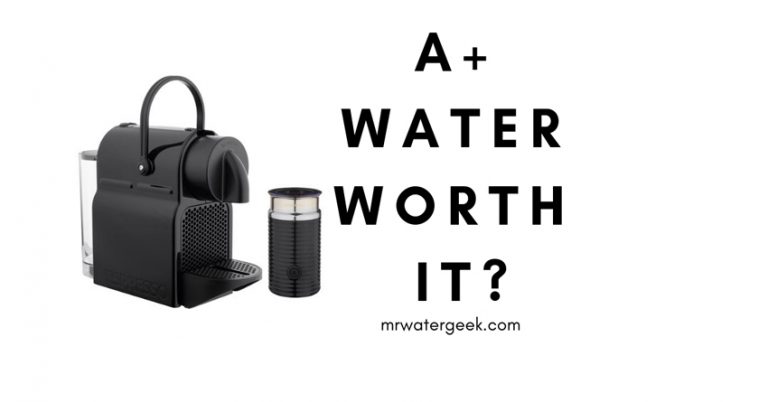Salt vs Salt-Free Water Softeners: A Comprehensive Comparison

Making improvements to your home’s water system is one of the best investments you can make. Whether it’s a water filter to remove contaminants or a water softener to soften the water and reduce scale buildup, having clean, safe drinking water brings both health and financial benefits. However, with the many options available, choosing the right type of water softener can seem like an overwhelming task. With this post, you can understand more and say goodbye to water problems!
In this post, we will compare traditional salt-based water softeners to newer salt-free water conditioning systems. By understanding the key differences between these options, I hope to help you arrive at an informed decision about which water softener best suits your home’s unique needs. Specifically, we will look at how each works, maintenance requirements, effectiveness levels, and the pros and cons of salt vs salt-free systems.
With this side-by-side comparison of salt vs salt-free water softeners, my aim is to simplify your selection process and empower you to choose a system that provides your family with soft, spot-free water for many years to come!

Salt vs Salt-Free Water Softeners: Everything You Need to Know
When it comes to choosing a water softener, the first decision is whether to go with a traditional salt-based system or look into newer salt-free conditioning technologies. Both approaches aim to reduce mineral buildup and scale. But, they utilize different methods that each have their own advantages and limitations, depending on factors like your water’s hardness level, maintenance preferences, and budget. Let’s explore these key considerations when selecting a water softener system:
There are two primary types available–salt-based ion exchange softeners that use salt to remove minerals from the water, and salt-free conditioners that alter mineral structures to prevent scale formation without relying on salt. Your local water report will contain information about water hardness levels which impacts how effective each option may be. Other deciding factors include whether you prefer the hands-off maintenance of a salt-free unit or don’t mind refilling salt periodically with traditional water softeners. Cost comparisons should take into account both a unit’s upfront price tag and operating expenses over its lifespan.
Taking the time to understand these differentiating characteristics between salt vs salt-free systems will help you opt for the best solution tailored to your home’s unique water qualities and priorities.
Comparing Salt vs Salt-Free Water Softeners:
When comparing salt vs salt-free water softeners, start with the below comparison table. Then, read on for a breakdown of both types of water softeners and how to choose the best one for you and your home!
| Parameter | Salt-Based Water Softeners | Salt-Free Water Softeners |
| How it works | Removes the hard minerals using a process called ion exchange resin beads and a brine rinse process | Does not remove minerals but alters their structure to prevent scale using electromagnetic conditioning or resin beads |
| Effectiveness | Highly effective for full water softening | Works to prevent scale buildup but water is not fully ‘softened’ |
| Maintenance | Requires regular salt loading and brine rinse regenerations | No salt, chemicals, or electricity needed after installation |
| Costs | Lower upfront costs but higher operating costs due to salt usage | Higher upfront costs but very low operating costs |
| Best for | Areas with very hard water over 15gpg | Areas with moderately hard water under 25gpg and those on low-sodium diets |
What Is A Salt-Based Water Softener?
For decades, the most commonly used type of water softener has been the salt-based ion exchange system. Powered by nothing but water pressure, these traditional softening units work through an ingenious process to remove calcium and magnesium ions–the minerals responsible for “hard water”.
At the heart of a salt-based softener is its resin tank, filled with thousands of polystyrene beads coated in sodium ions. When hard water enters this exchange column, the calcium and magnesium adhere to the tank’s sodium-loaded resin beads. Thus, pushing the sodium ions off into the water through a process called regeneration. This ionic swap leaves the outgoing water flowing through your plumbing virtually free of scale-causing minerals.
Salt-based water softeners are renowned for their unbeatable effectiveness at fully conditioning hard water. By using a reliable brine rinse process to flush accumulated calcium and magnesium from the resin with salt water, these resilient systems can treat very hard sources for decades on end without replacement. For homeowners prioritizing spotless fixtures and maximizing appliance lifespan above other factors, the proven performance of a salt-powered softener has made it the trusted solution for water treatment professionals and homeowners alike.
How Does A Salt Water Softener Work?
The ion exchange process that gives salt-based water softeners their name relies on a few key components working together. First, hard water enters the softener tank and passes through a resin bed filled with thousands of polystyrene beads. These beads have been coated with sodium ions, giving them an appetite for calcium and magnesium.
As the hard water filters through the resin, the calcium and magnesium minerals in the water are attracted to the sodium ions on the plastic beads. This ionic swap causes the calcium and magnesium to attach to the resin beads while releasing sodium ions back into the water. By essentially exchanging one mineral for another, the softened water flowing through your pipes is left free of scale-causing ions.
This is where salt plays its essential role. Over time, the resin beads become full of calcium and magnesium captured from the hard source water. To regenerate the softener, it pushes a measured dose of saltwater or brine solution through the tank. This process strips the calcium and magnesium off the beads, replacing them with sodium once again. Fully regenerated, the softener is recharged and ready for the next water treatment cycle. It is this simple yet elegant brine rinse that has made salt-based softeners the gold standard in residential water treatment systems for decades.

Pros and Cons of Salt Water Softeners
Pros
- Very effective at removing calcium and magnesium which cause hard water
- Mature and proven technology
- Produces silky soft water great for bathing, laundry, and reducing scale buildup
Cons
- Requires salt that needs replenishing
- Produces brine wastewater during regeneration
- High upfront and operating costs
- Moving and storing salt canisters is inconvenient
What Is A Salt-Free Water Softener?
In recent years, new varieties of “salt-free” water conditioners have emerged as popular alternatives to traditional sodium-fed softeners. Coined ” water conditioners” due to their lack of salt usage, these systems instead rely on scaled-down ion exchange resins or electromagnetic processes to achieve similar results without the inconvenience of replenishing brine.
At the core of salt-free technology are either small beads coated with alternative ions like potassium or silver, or tank-bound plates outfitted with various electrode configurations. When hard water flows by, these conditioned components aim to disrupt the mineral structures as they form, preventing the calcium and magnesium from crystallizing into scale.
While unable to fully ionize and remove water-borne hardness like a salt-fed softener, salt-free conditioners soften water through non-chemical means. By manipulating mineral composition with specialized resins or electricity, they render scale ions unable to effectively bond together and deposit as hard residues. For households preferring low-maintenance or sodium-restricted operation, salt-free systems provide a practical softening alternative worth considering.
How Does A Salt-Free Water Softener Work?
Unlike traditional softeners that use salt to regenerate ion exchange resins, salt-free conditioners take a gentler chemical-free approach to softening water. When hardness-bearing source water enters the unit, it encounters a tank filled with specialized resin beads or platinum-plated electrode plates.
Depending on the system, these conditioned components may utilize principles like controlled electrolysis or subtle electromagnetic pulses to disrupt how calcium and magnesium minerals naturally accumulate and bond. Effectively preventing immediate scale formation, the conditioned water continues to your home’s fixtures largely compositionally unmodified.
Over time, exposure to hard water ions may still allow some non-adherent mineral deposits. But by rendering scale structurally dissimilar from its crystalline norm, salt-free conditioners greatly minimize how quickly this can occur compared to untreated sources. While not fully ionizing and removing hardness through exchange like salt-dependent softeners, this non-disruptive conditioning process successfully mimics softened water for most residential needs.
Requiring no brine rinses or manual resets, these set-it-and-forget-it water conditioners deliver consistent scale protection through low-impact resin recharging or nonstop electrode pulses without added sodium or maintenance hassles.
If you are thinking about getting this type of system then I suggest the simplySoft and OptimH2O combination.

Pros and Cons of Salt-Free Water Softeners
Pros
- Requires no salt, chemicals, or electricity
- Low ongoing costs after initial purchase
- Environmentally friendly with no wastewater
- Works for people on sodium-restricted diets
Cons
- Works by preventing scale rather than fully softening water
- Less effective for extremely hard water over 25gpg
- May still require some mineral deposits to form
Final Thoughts on Salt vs Salt-Free Water Softeners
Softened water is a benefit for both your hygiene and self-care routines as hard water leaves a film on the skin and can lead to dry, itchy skin and hair. Getting the right type of water softener depends highly on your water hardness levels and individual priorities. As seen in the water softeners consumer reports, salt-based systems provide the most effective soft water treatment but require more maintenance. Conversely, salt-free conditioners have lower long-term costs but their effect is preventing rather than fully removing scale. Factors like your water hardness, budget, and lifestyle should help you determine whether traditional salt-based systems or salt-free conditioners best suit your home’s needs.
Before choosing a particular brand for a softener in the market, you might want to check for customer reviews. I have a number of reviews on many products on my blog to help you make the best decision in your choice of water housing system. Check out my reviews on Costco Water Softener, Northstar Water Softener, Eco Water, and so on.
Always remember,
Stay hydrated,
Shashank Varma (Mr Water Geek)






